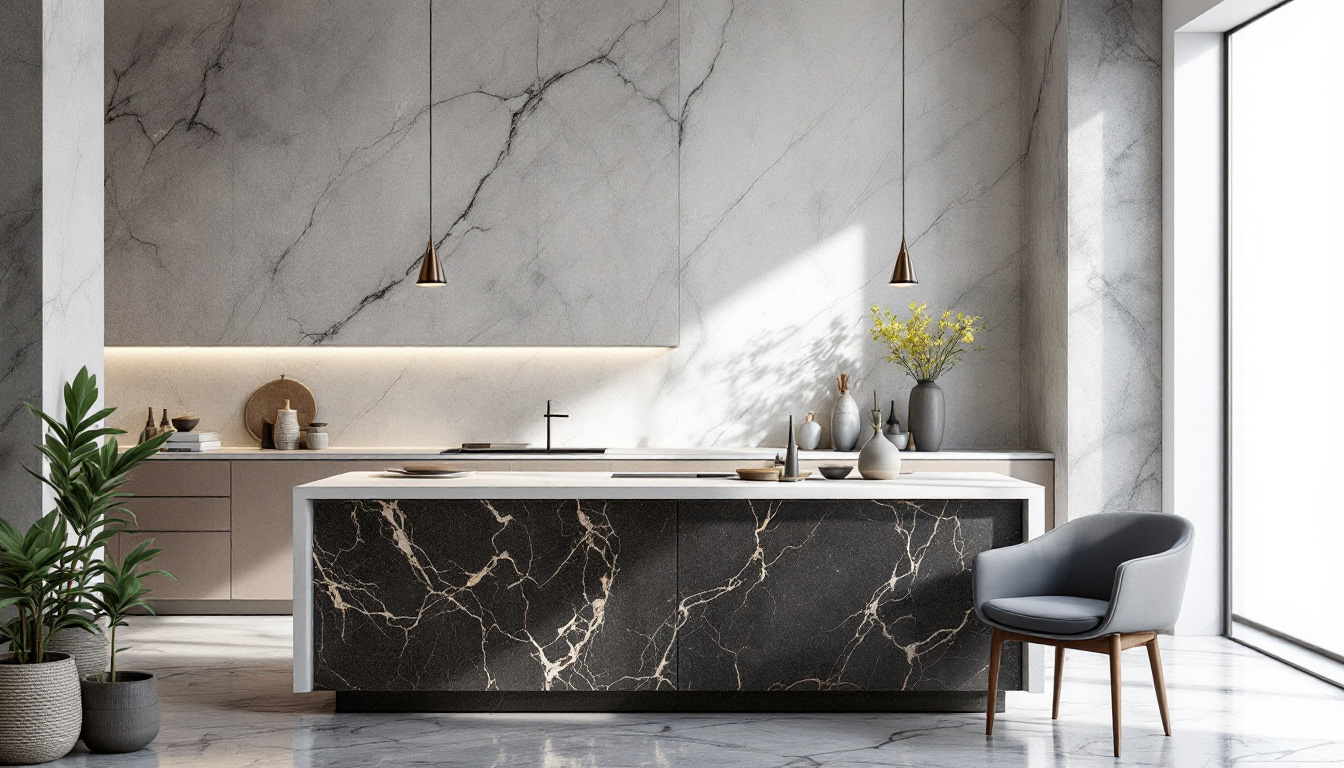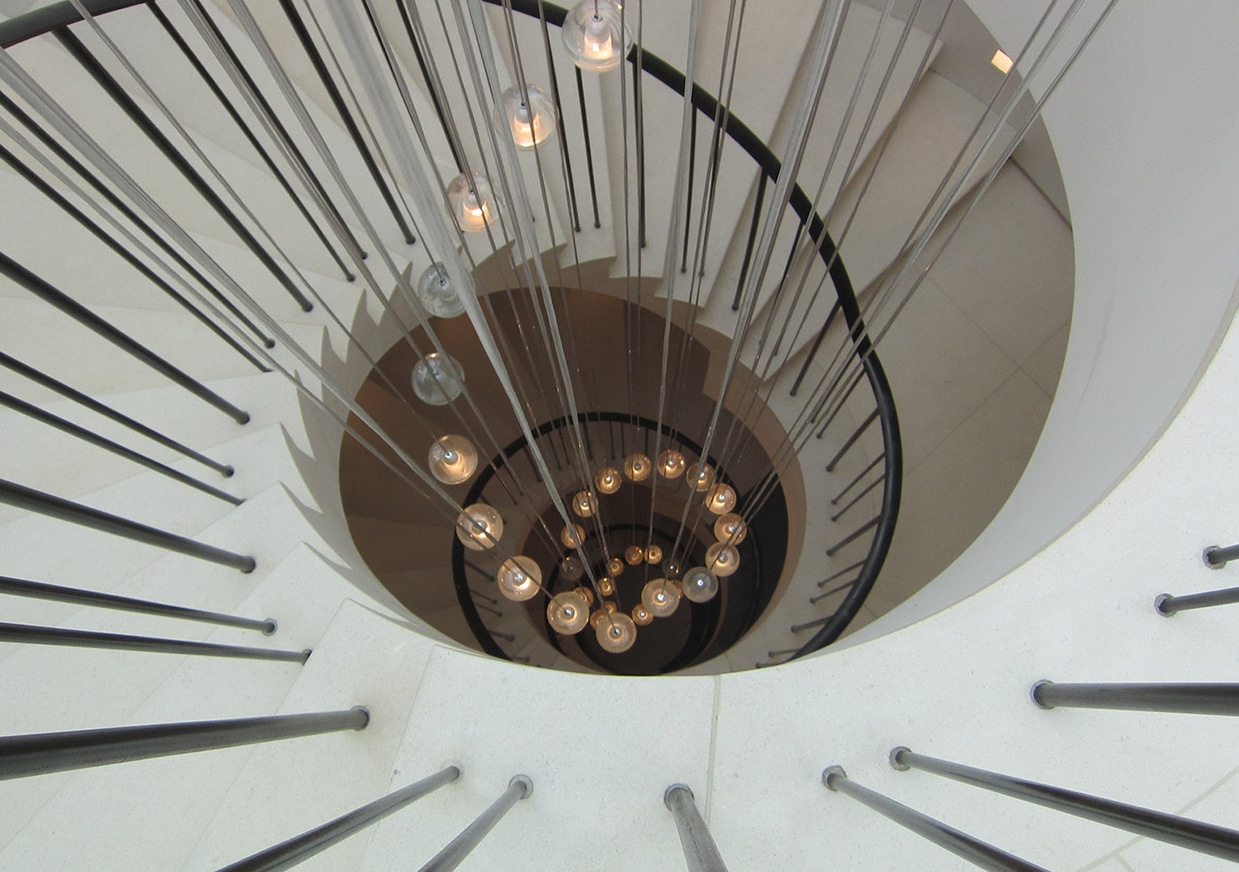
Granite, a naturally occurring igneous rock, has been a popular choice for interior design for centuries. Its durability, unique patterns, and versatility make it an ideal material for bespoke natural stone interiors. This article aims to provide an in-depth understanding of granite, its properties, how it is formed, and its use in interior design.
Granite is a coarse-grained rock composed mainly of quartz and feldspar, along with other minerals. Its formation is a result of the slow crystallisation of magma beneath the Earth’s surface. The colour of granite can vary widely, depending on its mineralogy and chemistry. This natural stone is known for its strength and resistance to wear, making it suitable for various interior applications.
Formation of Granite
The formation of granite is a complex geological process that takes millions of years. It begins with the melting of continental rocks caused by the subduction of tectonic plates. This melted rock, or magma, rises towards the Earth’s surface due to its lower density compared to the surrounding rocks.
As the magma rises, it cools slowly, allowing large crystals of quartz, feldspar, and other minerals to form. The slow cooling process is what gives granite its coarse-grained texture. Once the magma has completely solidified, it forms a large body of rock known as a pluton. Over time, erosion and tectonic activity expose these plutons at the Earth’s surface, where they can be quarried as granite.
Role of Minerals in Granite Formation
The minerals present in granite play a significant role in its formation. Quartz and feldspar are the dominant minerals, making up about 50-60% and 20-35% of granite’s composition, respectively. These minerals give granite its hardness and durability. Other minerals present in smaller quantities include mica, amphiboles, and sometimes biotite. These contribute to the color and pattern variations in granite.
Each mineral in granite solidifies at a different temperature, which influences the order in which they crystallize. This sequential crystallization is responsible for the interlocking texture of granite. The presence of different minerals also affects the color of the granite. For example, granite with a high concentration of quartz and feldspar tends to be lighter in color, while granite with more amphiboles and biotite is usually darker.
Properties of Granite
Granite is renowned for its physical properties, which make it a preferred material for interior and exterior applications. Some of these properties include hardness, durability, resistance to weathering, and aesthetic appeal.
Granite’s hardness is attributed to its quartz content. On the Mohs scale of mineral hardness, granite typically falls between 6 and 7, making it harder than most other natural stones. This hardness makes granite resistant to scratching and wear, which is particularly important in high-traffic areas.
Thermal Stability and Weather Resistance
Granite’s thermal stability and resistance to weathering are other notable properties. Due to its slow cooling process during formation, granite is resistant to temperature changes and can withstand high heat without cracking or discoloring. This makes it suitable for applications such as kitchen countertops, where it may be exposed to hot pots and pans.
Furthermore, granite’s resistance to weathering makes it an excellent choice for outdoor applications. It can withstand rain, sun, and temperature fluctuations without losing its color or finish. This weather resistance, combined with its natural beauty, makes granite a popular choice for outdoor patios, walkways, and exterior cladding.
Granite in Interior Design
Granite’s unique aesthetic appeal and functional properties make it a popular choice in interior design. It is used in various applications, including countertops, flooring, and wall cladding. The natural variation in color and pattern in each slab of granite adds a unique, luxurious touch to any space.
Granite countertops are a popular choice in kitchens and bathrooms due to their durability and resistance to heat and moisture. They are also easy to clean and maintain, making them a practical choice for these areas. Granite flooring is another common application. Its hardness and resistance to wear make it suitable for high-traffic areas.
Bespoke Granite Interiors
Bespoke granite interiors refer to custom-designed interior spaces that utilize granite in unique and creative ways. This could involve using granite in unconventional applications, combining different types of granite, or sourcing rare and exotic granite varieties. Bespoke granite interiors are often designed by interior designers or architects, who work closely with clients to create a space that reflects their personal style and meets their specific needs.
For example, a bespoke granite interior could include a custom-designed granite fireplace surround, a granite feature wall, or a kitchen island with a unique granite countertop. The possibilities are endless, and the result is a one-of-a-kind space that is both functional and aesthetically pleasing.
Granite Varieties and Their Applications
There are hundreds of granite varieties available, each with its unique colour, pattern, and mineral composition. Some of the most popular granite varieties include Black Galaxy, Baltic Brown, Blue Pearl, and Santa Cecilia. The choice of granite variety depends on the desired aesthetic and the specific application.
For example, Black Galaxy granite, known for its deep black color with gold or white flecks, is a popular choice for kitchen countertops and backsplashes. Baltic Brown granite, with its brown and tan specks on a light brown background, is often used for flooring and wall cladding. Blue Pearl granite, characterized by its metallic blue hue with shimmering flecks, is a luxurious choice for countertops and feature walls.
Choosing the Right Granite for Your Interior
Choosing the right granite for your interior involves considering several factors, including color, pattern, finish, and application. The color and pattern of the granite should complement the overall design scheme of the space. The finish of the granite, which can be polished, honed, or flamed, can also affect the look and feel of the space.
Furthermore, the specific application of the granite should be considered. For example, if the granite is to be used for a kitchen countertop, a variety with a high quartz content would be ideal due to its hardness and heat resistance. On the other hand, if the granite is to be used for a bathroom floor, a variety with a high feldspar content would be better due to its resistance to moisture.
Granite Maintenance and Care
Despite its durability, granite requires regular maintenance to keep it looking its best. This includes cleaning, sealing, and repairing any damage promptly. Cleaning granite surfaces regularly with a mild, non-acidic cleaner can help prevent staining and maintain the stone’s natural shine.
Sealing granite is also important to protect it from staining and etching. Most granite surfaces need to be sealed once a year, but this can vary depending on the type of granite and its usage. Any chips or cracks in the granite should be repaired promptly to prevent further damage.
Preventing Damage to Granite Surfaces
Preventing damage to granite surfaces involves taking some simple precautions. For example, using coasters under glasses and placing hot pots and pans on trivets can help prevent staining and heat damage. Avoiding the use of harsh or acidic cleaners can also help preserve the granite’s natural shine.
Furthermore, it’s important to wipe up spills promptly, especially those involving acidic substances like lemon juice or vinegar, as these can etch the granite surface. Regularly inspecting the granite for any signs of damage and addressing them promptly can also help maintain its beauty and longevity.
Conclusion
Granite is a versatile and durable natural stone that is widely used in interior design. Its unique aesthetic appeal, combined with its functional properties, make it a popular choice for bespoke natural stone interiors. Whether used for countertops, flooring, or feature walls, granite adds a touch of luxury and sophistication to any space.
Understanding the formation and properties of granite, as well as how to choose the right variety and maintain it properly, can help homeowners and designers make the most of this beautiful natural stone. With the right care and maintenance, granite can last a lifetime, making it a worthwhile investment for any interior.
Transform Your Space with A F Jones Stonemasons
Now that you’ve discovered the timeless elegance and durability of granite for bespoke natural stone interiors, take the next step with A F Jones Stonemasons. With over 160 years of expertise, we offer a seamless journey from design to installation, ensuring your vision becomes a reality. Our skilled team is ready to tackle projects of any size, from grand architectural endeavors to intimate custom pieces. Experience our blend of traditional craftsmanship and modern precision by visiting our Oxfordshire showroom or making an enquiry today. Let us help you unlock the true potential of stone in your space.


